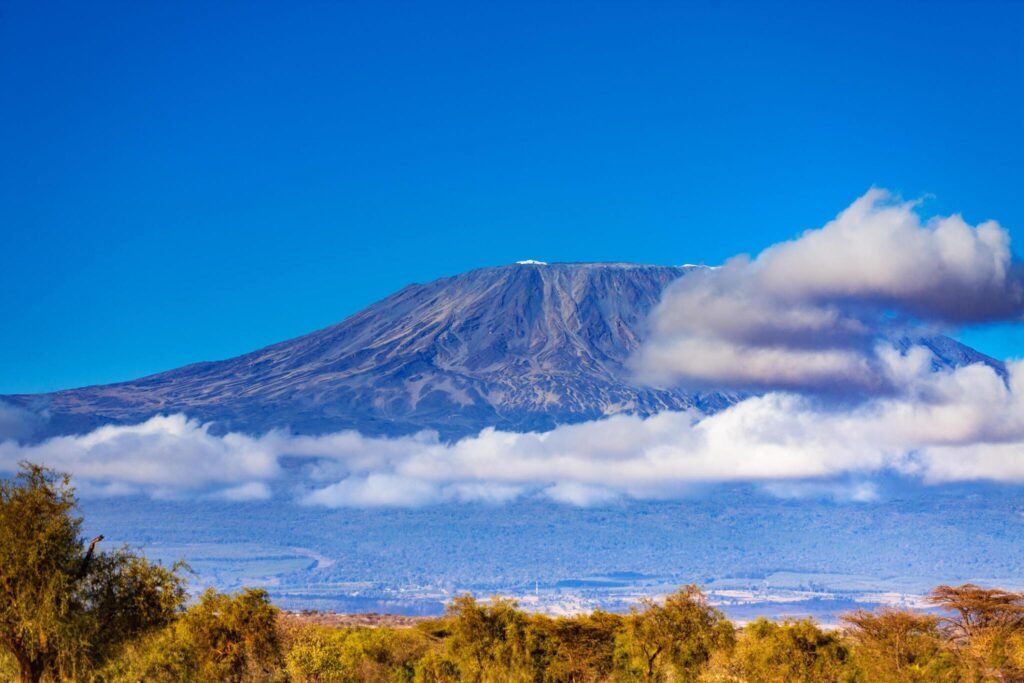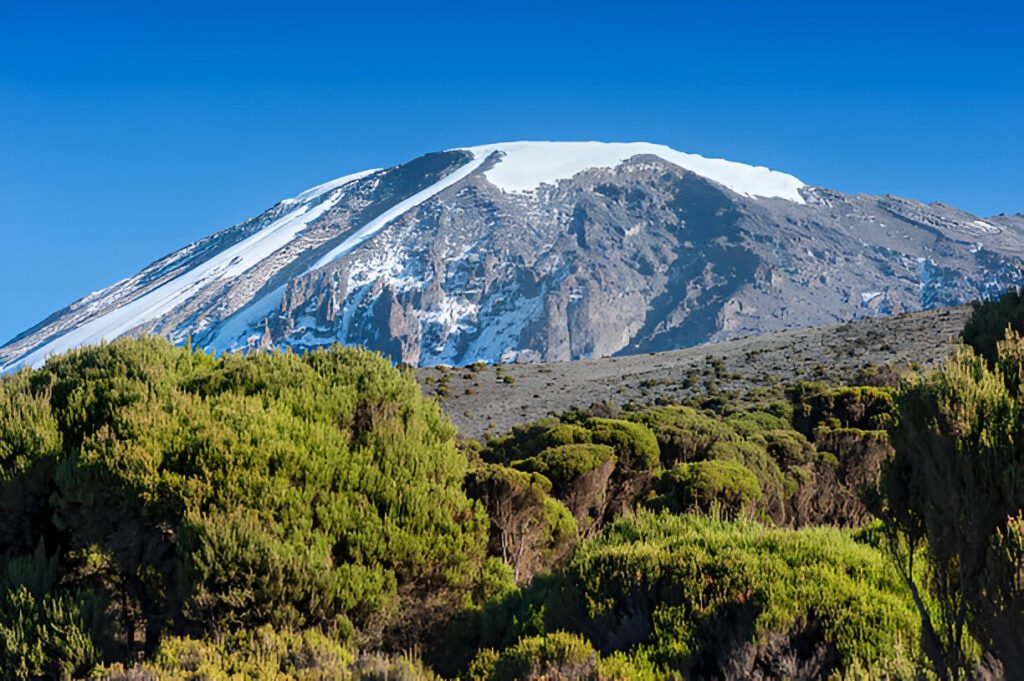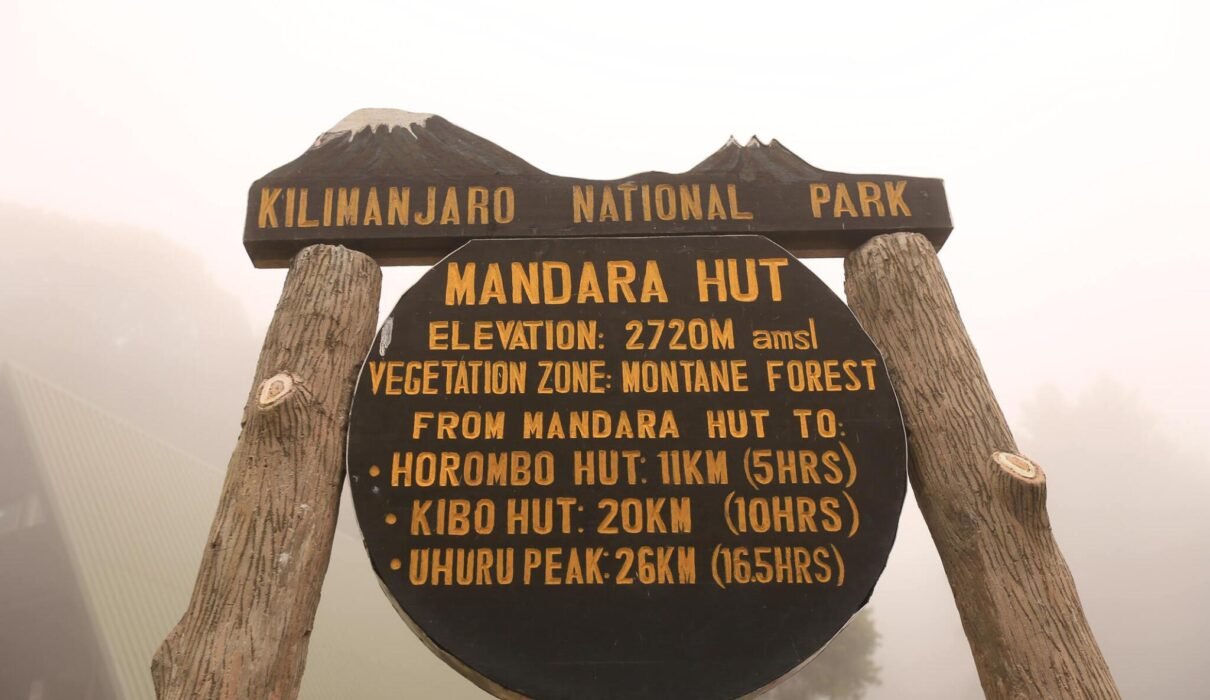How Cold Is the Top of Mount Kilimanjaro ? .Mount Kilimanjaro, the tallest peak in Africa, is a dream destination for climbers from around the world. Known for its challenging ascent, diverse ecosystems, and breathtaking views, reaching the summit of Kilimanjaro is an incredible achievement. One of the biggest questions most climbers ask is: How cold is the top of Mount Kilimanjaro?
The temperatures at the summit can drop significantly, and being prepared for these extreme conditions is crucial for a successful climb. In this guide, we’ll explore just how cold it gets at the top of Kilimanjaro, what to expect on your way up, and how to prepare for the harsh environment.

How Cold Is the Top of Mount Kilimanjaro ?
The summit of Mount Kilimanjaro, located at an altitude of 5,895 meters (19,341 feet), is cold throughout the year. On average, the temperature at the summit (Uhuru Peak) can range from -7°C to -29°C (19°F to -20°F), depending on the time of day and season. The coldest temperatures are typically experienced at night and just before dawn, which is when most climbers attempt their final push to the summit.
During the day, temperatures at the summit may rise slightly, but the high altitude, wind chill, and lack of atmospheric pressure can make it feel much colder.
Learn more about Kilimanjaro’s summit conditions with Kilimanjaro Climb Specialist
How Cold Is the Top of Mount Kilimanjaro ? : Factors Affect the Temperature at the Summit?
Several factors affect how cold it gets at the top of Mount Kilimanjaro. It’s important to understand these factors so you can better prepare for your climb.
1. Altitude
As you ascend Kilimanjaro, the air gets thinner, and temperatures drop. The higher you go, the colder it becomes, with the summit experiencing the coldest conditions. Every 1,000 meters of elevation typically results in a temperature drop of about 6.5°C (11.7°F).
2. Time of Year
While temperatures at the summit remain cold year-round, the dry season (June to October) tends to have slightly warmer conditions compared to the wet season (March to May). However, the difference is minimal, and you should always be prepared for freezing temperatures, regardless of when you climb.
3. Wind Chill
The wind chill factor at the summit can make the temperature feel even colder than it actually is. Strong winds, especially at night or in the early morning, can significantly lower the perceived temperature, increasing the risk of hypothermia and other cold-related conditions.
Discover more about Kilimanjaro’s weather patterns here
How Cold Is the Top of Mount Kilimanjaro ? : How to Prepare for the Cold on Mount Kilimanjaro
Proper preparation is essential for dealing with the cold at the summit of Kilimanjaro. Here’s how you can prepare for the freezing temperatures:
1. Layering Is Key
When climbing Kilimanjaro, the secret to staying warm is to dress in layers. You’ll want to start with moisture-wicking base layers, followed by insulating mid-layers (such as fleece or down), and finish with a waterproof and windproof outer layer. The layering system allows you to add or remove clothing as needed to regulate your body temperature.
2. Wear Proper Headgear
A significant amount of body heat is lost through the head, so it’s essential to wear a warm hat or balaclava during the final ascent to the summit. Consider bringing a thermal beanie or a buff scarf to keep your face, neck, and ears protected from the cold.
3. Insulated Gloves and Socks
Keeping your hands and feet warm is crucial to avoid frostbite. Invest in a pair of thermal gloves and wool or thermal socks to keep your extremities warm during the cold summit nights. Wearing glove liners underneath your gloves can provide additional warmth and flexibility.
4. High-Quality Sleeping Bag
A warm and comfortable night’s sleep is vital for recovery during your climb. Make sure to pack a four-season sleeping bag that is rated for temperatures as low as -15°C (5°F) or lower. If necessary, use a sleeping bag liner for extra warmth.
Get a full Kilimanjaro packing guide with Kilimanjaro Climb Specialist
How Cold Is the Top of Mount Kilimanjaro ? : What to Expect During the Final Ascent
The final push to the summit of Mount Kilimanjaro typically begins around midnight, with most climbers reaching Uhuru Peak at sunrise. This timing is chosen to avoid the intense heat of the day and to give climbers the unforgettable experience of watching the sunrise from the highest point in Africa.
However, the timing also means that you’ll be climbing in the coldest part of the day, with temperatures plummeting as low as -29°C (-20°F). At this altitude, oxygen levels are low, and the combination of cold and exhaustion makes the final ascent particularly challenging. Be prepared for high winds and freezing conditions during this stage.
How Cold Is the Top of Mount Kilimanjaro ? : How Cold Are the Different Climate Zones of Kilimanjaro?
Mount Kilimanjaro is unique because it encompasses five distinct climate zones, each with its own weather patterns and temperatures. Here’s a breakdown of the temperature ranges in each zone:
1. Cultivation Zone (800 – 1,800 meters)
- Temperature: 20°C to 25°C (68°F to 77°F)
- This zone consists of farmland and lush greenery. The weather is warm and humid here.
2. Rainforest Zone (1,800 – 2,800 meters)
- Temperature: 12°C to 15°C (54°F to 59°F)
- You’ll experience misty, cool weather with occasional rain showers in the rainforest.
3. Heather and Moorland Zone (2,800 – 4,000 meters)
- Temperature: 5°C to 10°C (41°F to 50°F)
- As you climb higher, the vegetation becomes sparse, and temperatures drop.
4. Alpine Desert Zone (4,000 – 5,000 meters)
- Temperature: -4°C to 5°C (25°F to 41°F)
- This zone is cold and barren, with strong winds and little plant life.
5. Arctic Zone (5,000 – 5,895 meters)
- Temperature: -7°C to -29°C (19°F to -20°F)
- The summit is covered in glaciers, with freezing temperatures and harsh winds.
Explore the unique climate zones of Kilimanjaro with Eddy Tours Safaris

How Cold Is the Top of Mount Kilimanjaro ? : FAQs
1. How cold does it get at the top of Mount Kilimanjaro?
The summit of Kilimanjaro can reach temperatures as low as -29°C (-20°F), especially during the night and early morning hours.
2. What should I wear to stay warm during the summit climb?
Dressing in layers is essential. Start with moisture-wicking base layers, followed by insulating layers like fleece or down, and finish with a windproof and waterproof outer layer.
3. Does it snow at the top of Kilimanjaro?
Yes, snow and ice are common at the summit of Kilimanjaro, especially in the Arctic Zone, which is covered by glaciers.
4. How do I prevent altitude sickness in cold weather?
Acclimatizing slowly, staying hydrated, and eating well are key to preventing altitude sickness. Speak with your guide about the symptoms and how to manage them.
5. Is climbing Kilimanjaro harder in the cold?
Yes, the cold weather, combined with high altitudes and low oxygen levels, makes the climb more challenging. However, with proper preparation and guidance, it is achievable.
How Cold Is the Top of Mount Kilimanjaro ? : Ready to Conquer Mount Kilimanjaro?
Summiting Mount Kilimanjaro is an incredible experience, but the cold temperatures at the top demand careful preparation. By dressing in layers, using high-quality gear, and understanding the climate zones, you can enjoy the journey and reach the summit with confidence.
Start planning your Kilimanjaro adventure with Kilimanjaro Climb Specialist
Book your climb with Eddy Tours Safaris

